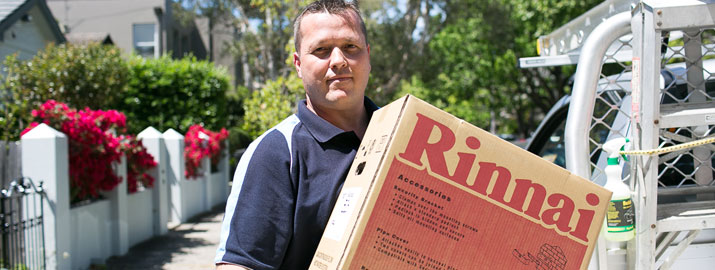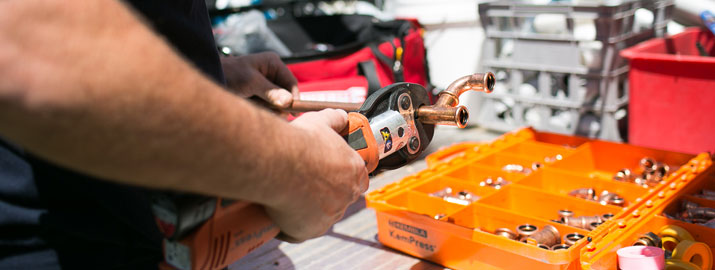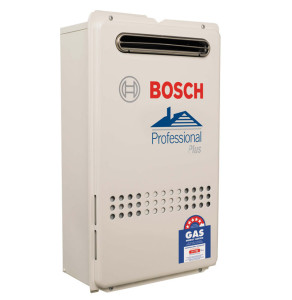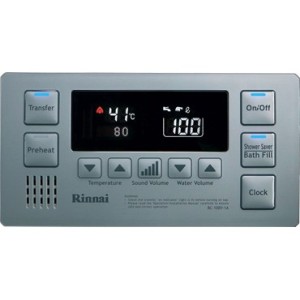
Continuous Flow Hot Water.
What is Continuous Flow Hot Water?
Sometimes called “Instantaneous Hot Water“, these units heat water on demand. They only consume energy when a tap is turned on. This means that they do not need to keep hot water stored in a tank and therefore are one of the most efficient systems available. They can run on demand for as long as required, meaning there is no such thing as running out of hot water. Aside from they obvious energy savings they have a very small footprint. Where a traditional style storage tank generally takes up a lot of room, a continuous flow unit is around the size of a suit case and attaches to the wall.
Older versions often referred to as “Instantaneous” were basic mechanical units with low hot water supply rates around 10 to 13 litres per minute. Some people may have used these units in the past and might remember issues with hot water supply especially when multiple hot water taps were opened as these older units could generally only supply 1 or 2 taps simultaneously. Whilst fairly efficient, the inconvenience of having a shower and having the hot water supply drop out because someone opened the hot tap in the kitchen was annoying to say the least. Additionally they had a constantly lit pilot light that could blow out on windy days adding further to the inconvenience. Being mechanically operated though they are very basic in operation and there are many still in working order that are over 30 years old and will probably continue working as long as basic spares are available.
Modern continuous flow units are a very different thing
Still using the same principle of heating water on demand rather than storing it, they have far more control of internal flow rates of gas and water thanks to electronically controlled valves. What this means is that they constantly monitor hot water temperature and can maintain this temperature by adjusting the gas flow to the burners thus allowing them to run up to 4 to 5 hot water outlets simultaneously without major fluctuations in temperature. They have a more efficient heat exchanger (some even have 2) than older models allowing them in some cases to attain a 7 star energy efficiency rating. These can be combined with flow and return systems that circulate and effectively heat the water in the lines between the heater and the tap ensuring not only is energy saved but so is water.
This electronic control also allows for new features such like “Bath Fill”, where you select the volume of water you want and the temperature and the heater does the rest – Set and Forget. Or preselecting a favourite shower temperature at a controller located in the bathroom and just turning on the hot tap with no need to mix in cold water. Traditional controllers need to be wired back to the heater but some brands now offer wireless options alleviating the need for additional installation costs.
The are some basic requirements when it comes to installing these units. Hot and cold supply lines can be reused if installing in place of an old storage tank. Additionally they need a 20mm ( 3/4) gas line and a power point. The power point is required to run the electronics and generally uses around 3 to 5 watts, only when the unit is running.
Tempering Valves
Since 2013 all hot water supplied to sanitary fixtures (basically anything except the kitchen sink or laundry tub) must be tempered to a maximum of 50 Celsius. If you opt for a continuous flow heater that is factory preset at 50 Celsius (recommended) there is no need for a tempering valve. Some people still prefer to have a 60 Celsius heater and separate hot supplies, one for the kitchen and laundry at 60C and another line for the basins, showers etc set at 50C. This situation is the only time a tempering valve is required for a continuous flow hot water heater.
For more information on when and why these are required and how much they cost click the link below.
How Much?
Prices vary greater due to the large model range and all of the available options. For example though, someone who just wants a basic energy efficient hot water heater to replace and existing gas or electric storage heater and has a kitchen and 2 or so bathrooms the ideal choice is something like a Bosch Professional 26, Rinnai B26 or Infinity. Below is a rough guide to what these cost to supply and fit
Bosch Professional 26 litres/minute – Around $1700 to supply and install including GST
Rinnai B26 26 litres/minute – Around $1750 to supply and install including GST
Rinnai Infinity 26 litres/minute – Around $1950 to supply and install including GST
Pros and Cons
Pros
- Cheapest hot water, second only to gas boosted solar
- Smallest footprint of all systems
- Best warranty of all systems
- No tank to rust out – 20 year old systems still running perfectly with basic maintenance
- Copper and aluminium internals
- Continuous hot water that never runs out
- Excellent temperature control
- Regular rebates to switch over from electric to gas can make them cheaper to install than replacing your existing electric heater
Cons
- Marginally higher initial installation cost
- Initially takes around 5 additional seconds for hot water to arrive at the tap
Don’t Miss Out!
If you switch from an electric storage hot water system to a continuous flow hot water heater before March 31st 2015 you may be eligible for a $500 eftpos card to use at any eftpos terminal across Australia courtesy of Jemena, the natural gas network supplier.
Call Rupes Today & Start Saving – 0414 555 674



